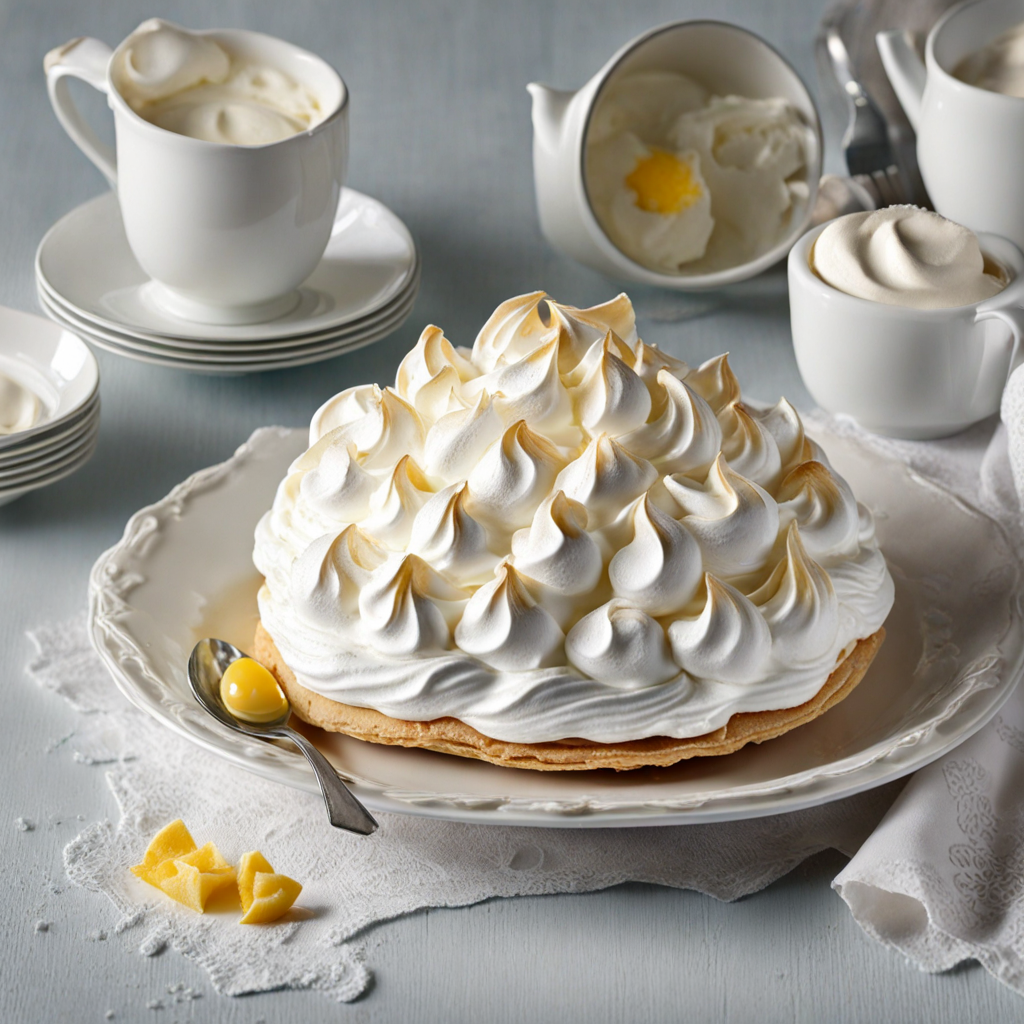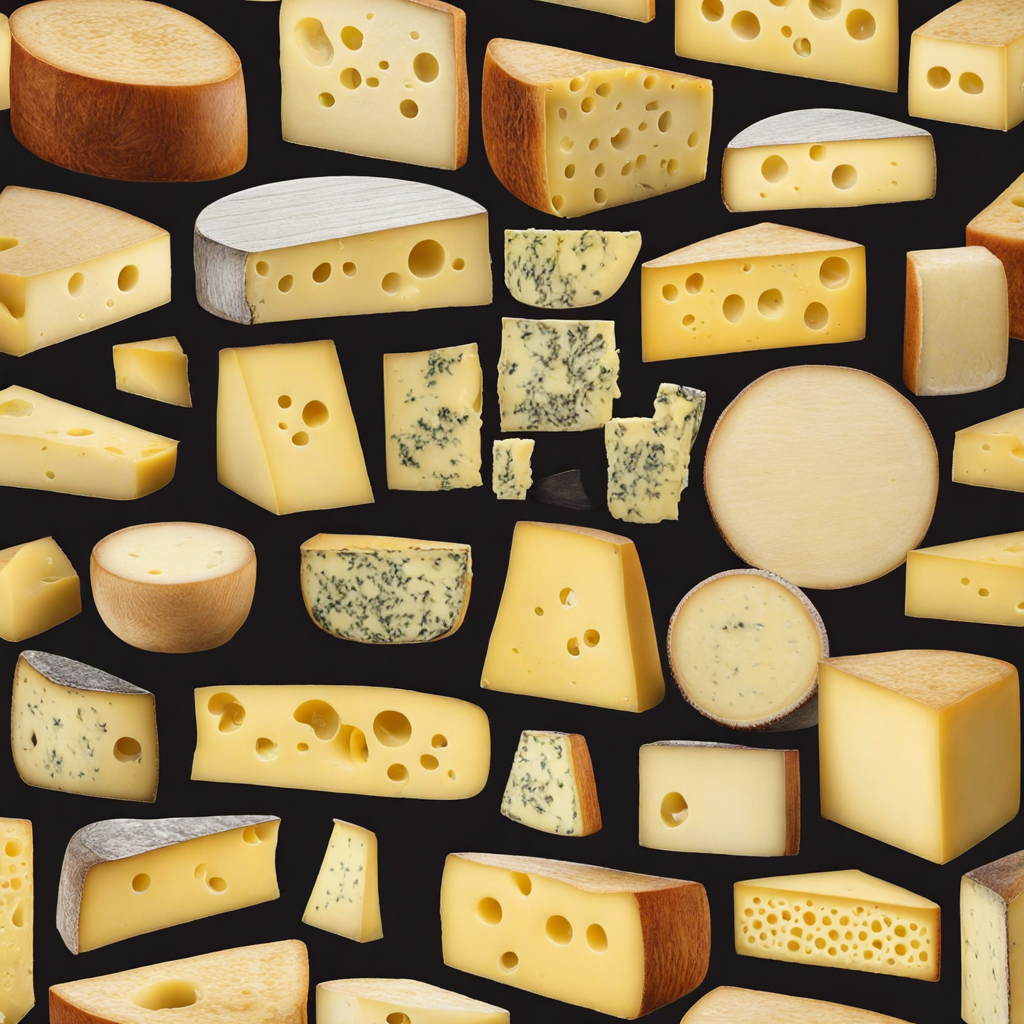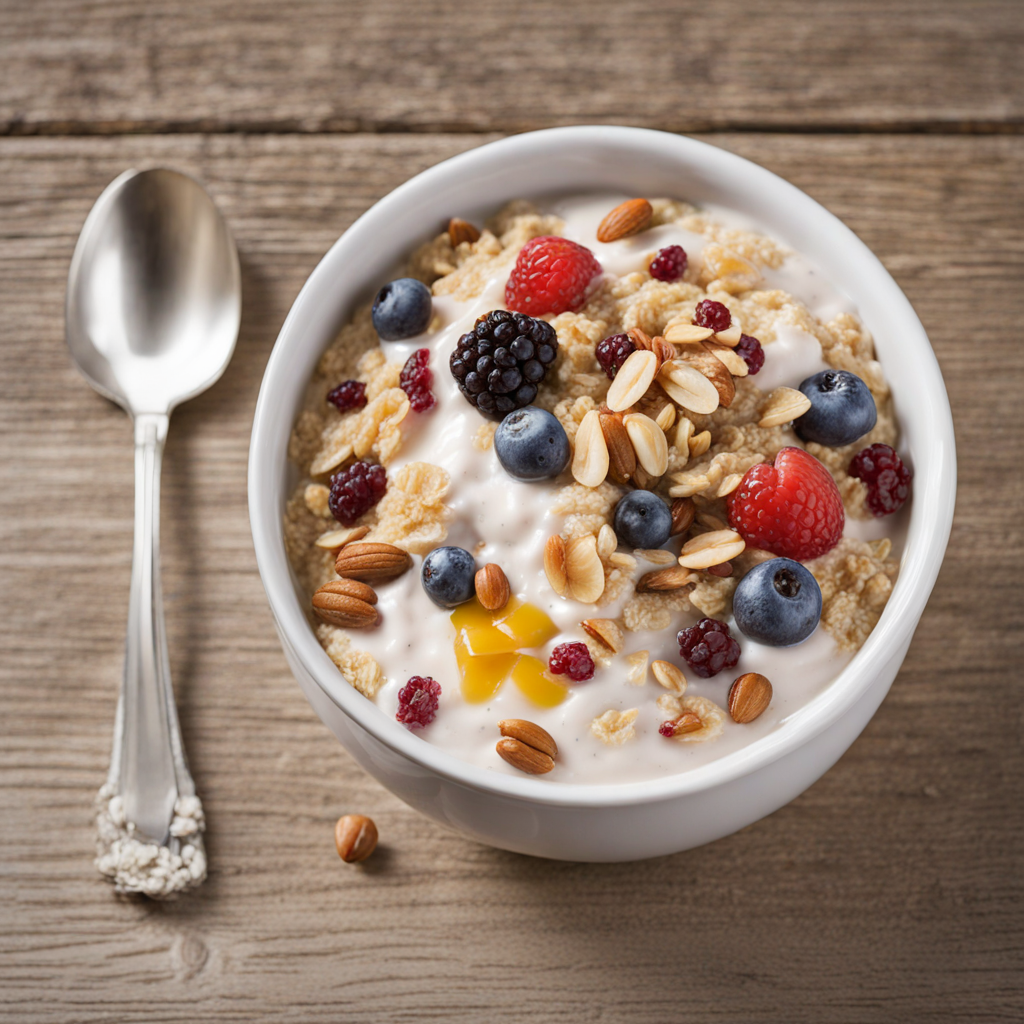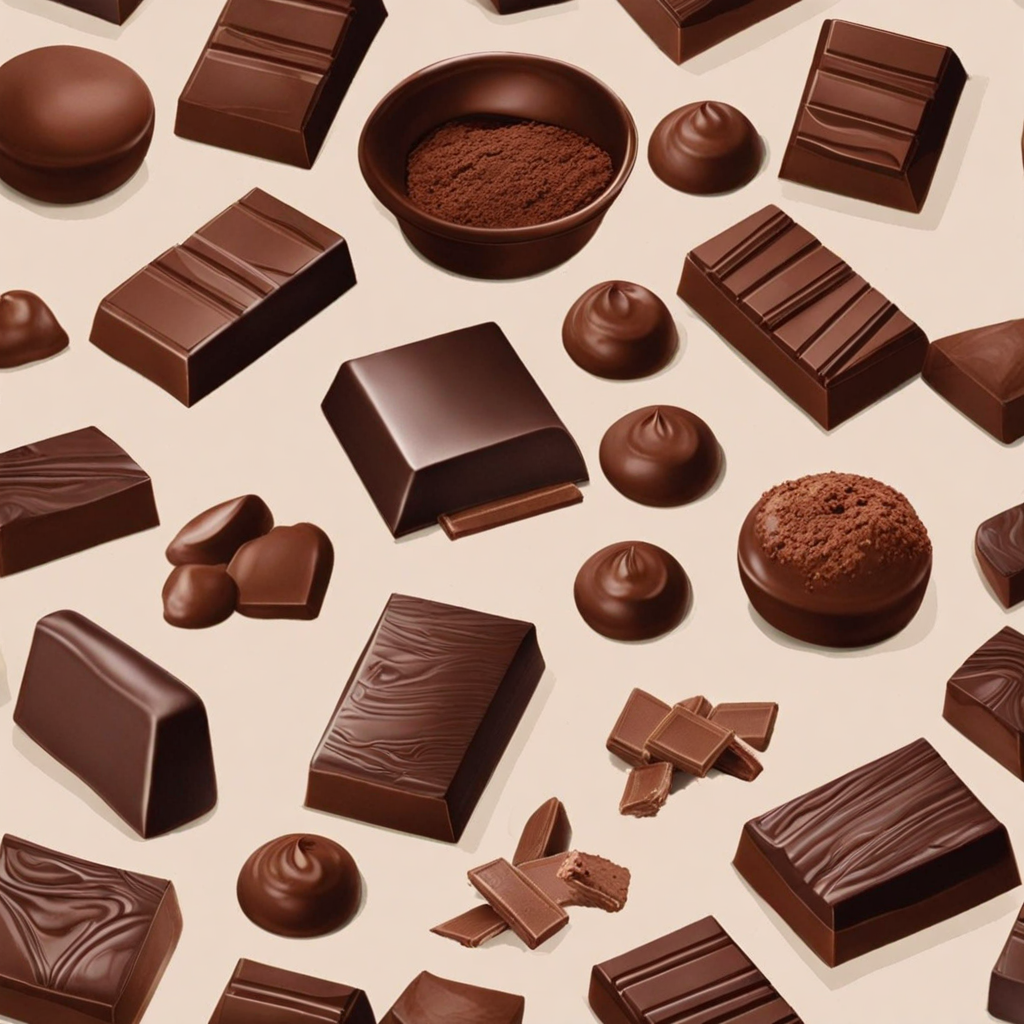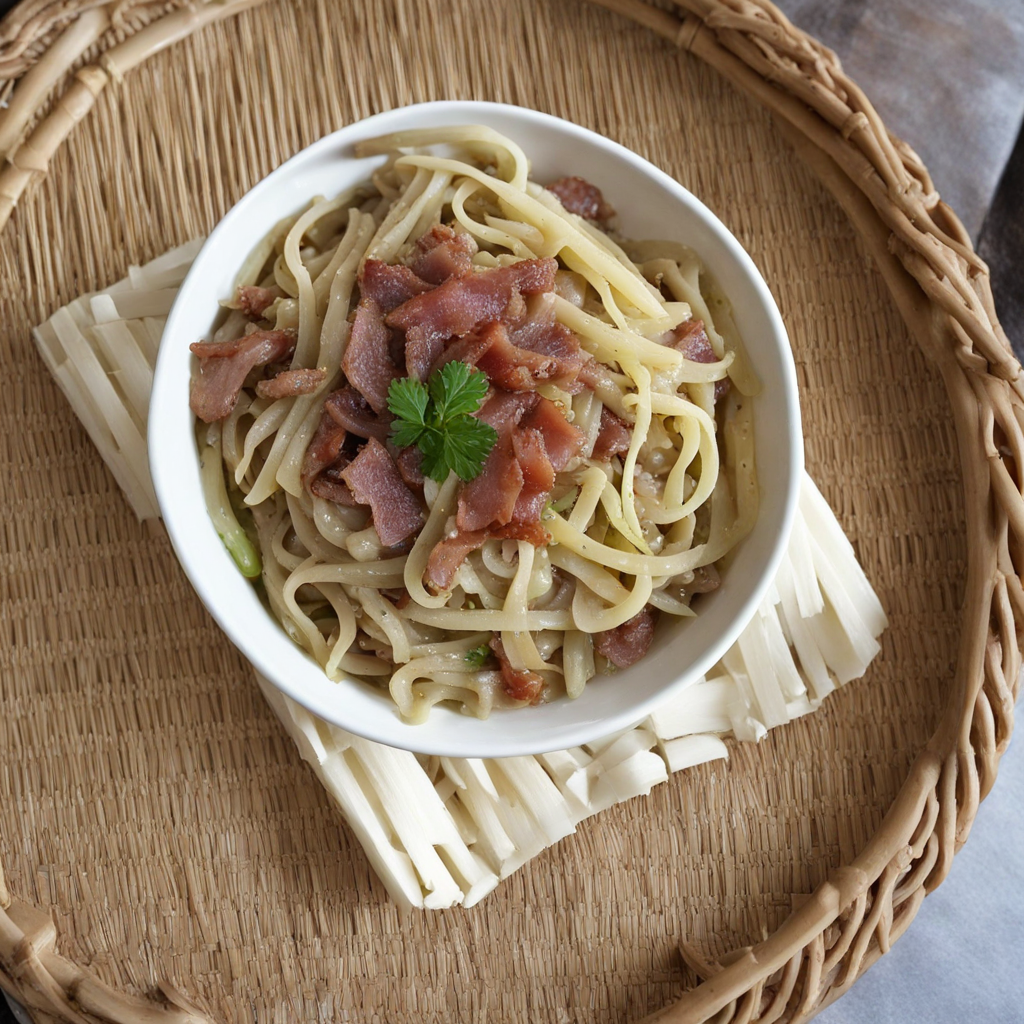Meringue
Meringue is a delightful Swiss confection that captivates the senses with its delicate texture and sweet flavor. Made primarily from whipped egg whites and sugar, this treat is renowned for its light and airy consistency. The process involves beating egg whites until they form stiff peaks, then gradually incorporating sugar to create a glossy, stable mixture. Baked at a low temperature, meringues transform into crisp, melt-in-your-mouth delights that can be enjoyed on their own or as a component in various desserts. In Switzerland, meringue is often paired with cream and fresh fruits, creating a harmonious balance of flavors and textures. The classic combination of meringue with whipped cream and berries, particularly raspberries or strawberries, showcases the meringue's sweetness against the tartness of the fruit. This decadent dessert is not only visually appealing with its cloud-like appearance but also offers a satisfying crunch followed by a soft, chewy interior, making each bite a pleasurable experience. Swiss meringue can also be found in various forms, such as the larger, more rustic "meringue Suisse" or smaller, bite-sized pieces known as "meringue kisses." Additionally, it serves as a versatile base for other desserts, such as pavlova or the famous Swiss dessert, "Torte," where layers of meringue are combined with rich chocolate or creamy fillings. Exploring meringue allows you to appreciate the artistry and skill behind this simple yet elegant sweet, making it a must-try for any food enthusiast eager to discover new tastes.
How It Became This Dish
The Sweet Evolution of Meringue: A Swiss Culinary Delight Meringue, a delicate confection made primarily from whipped egg whites and sugar, has a rich and storied history that captures the imagination of food enthusiasts around the world. Its origins can be traced back to the early 17th century, with Switzerland often cited as the birthplace of this ethereal treat. The journey of meringue is not just a tale of culinary invention but also intertwines with cultural significance and gastronomic innovation. #### Origins: The Swiss Connection The exact origins of meringue are somewhat nebulous, with multiple regions claiming its invention, including France and Italy. However, Switzerland's association with meringue is particularly strong. The term "meringue" is believed to derive from the Swiss village of Meiringen, located in the Bernese Oberland. According to culinary lore, a chef named Gasparini is credited with creating the dessert in the early 18th century. The story goes that he whipped together egg whites and sugar, achieving a light and airy texture that would eventually capture the hearts of many. Early meringues were quite different from what we enjoy today. They were often baked at a low temperature to create a crisp exterior while maintaining a soft, marshmallow-like center. This method of preparation highlighted the skill involved in working with egg whites, as achieving the perfect consistency required precision and patience. Meringue was initially considered a luxurious treat, often reserved for the wealthy and served at grand banquets and special occasions. #### Cultural Significance In Switzerland, meringue holds a special place in the culinary landscape. It is often paired with fresh cream and berries, creating a delightful dessert known as "meringue with cream" or "meringue with double cream." This combination exemplifies the Swiss penchant for balancing rich flavors with light textures, a hallmark of their cuisine. The dish has become synonymous with Swiss hospitality, often served to guests as a sign of warmth and generosity. Meringue also plays a role in various Swiss festivals and celebrations. The tradition of making meringue is passed down through generations, with families often gathering to whip up batches during holidays or special events. This communal aspect of meringue-making fosters a sense of connection and continuity within Swiss culture, as recipes are shared and adapted over time. #### Development Over Time As meringue made its way beyond Switzerland, it underwent numerous transformations, influenced by regional ingredients and culinary practices. The late 18th and early 19th centuries saw meringue gaining popularity in France, where it was embraced by renowned chefs such as Marie-Antoine Carême. Carême's innovative techniques and presentations elevated meringue to new heights, incorporating it into elaborate pastries and desserts. One of the most notable developments was the introduction of flavored meringues. Chefs began experimenting with various ingredients, such as vanilla, chocolate, and fruit purées, resulting in a diverse array of meringue-based desserts. French patisseries began to offer meringue in different forms, including the iconic pavlova—a meringue shell filled with whipped cream and topped with fresh fruit, which, while often attributed to Australia and New Zealand, has roots in the broader meringue tradition. The 20th century brought further advancements in meringue-making techniques, thanks in part to technological developments such as electric mixers. This innovation made it easier for home cooks to achieve the perfect whipped consistency, democratizing access to this once-exotic treat. The rise of food media, including cookbooks and television shows, contributed to meringue's enduring popularity, as chefs shared their techniques and recipes with a wider audience. #### Meringue in Modern Cuisine Today, meringue is celebrated worldwide, not just in Switzerland but across various cultures. Its versatility allows it to be used as a base for an array of desserts, from the classic French meringue kisses to the Italian meringue used in creamy buttercream frostings. In the United States, the iconic lemon meringue pie features a tangy lemon curd filling topped with a fluffy meringue, showcasing the dessert's ability to balance sweet and tart flavors. Meringue has also adapted to contemporary culinary trends, with a growing interest in alternative sweeteners and egg substitutes for those with dietary restrictions. Vegan meringues made from aquafaba (the liquid from canned chickpeas) have emerged as a popular alternative, allowing those who follow plant-based diets to enjoy this beloved treat. #### Conclusion: A Sweet Legacy The history of meringue is a testament to the creative spirit of culinary innovation and the enduring appeal of simple yet elegant desserts. From its Swiss origins to its global popularity, meringue embodies a rich tapestry of cultural significance, tradition, and adaptation. As we savor the light, airy bites of meringue today, we are reminded of the generations of cooks and bakers who have perfected this delicate confection, ensuring that it remains a cherished part of the culinary world. In an age where food is more than just sustenance but a means of connection and expression, meringue stands out as a symbol of sweetness that transcends borders. Its evolution reflects not only the changing tastes of society but also the unchanging desire for beauty and comfort in our culinary experiences. Whether enjoyed at a festive gathering in Switzerland or as a delightful treat in a modern café, meringue continues to inspire and delight—a true testament to the art of dessert making.
You may like
Discover local flavors from Switzerland



